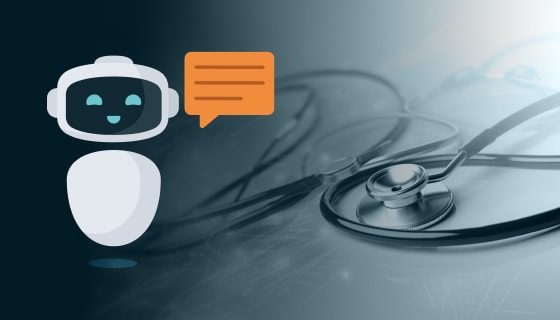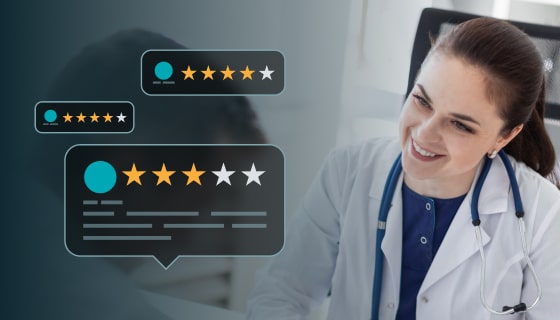Introduction
In the current age of digital prevalence, it’s pertinent for hospitals to effectively make use of social media tools to carve their unique brand identity. And! Thereby broadening their visibility within the healthcare sector.
The Role of Social Media in Shaping Hospital Brand Identity
Social media has become instrumental in providing a platform for swift and direct communication. Furthermore, consolidating the hospital’s image among a widespread audience. This hands on interaction can lead to an entrenched and powerful brand identity within the public perception.
Impact of Branding on Patient Loyalty
Building on the significance of a robust image, strong branding directly correlates to an escalation in patient trust, which feeds into the reinforcement of patient loyalty.
By employing strategic and impactful branding methodologies on popular platforms. Hospitals can then generate a steadfast, loyal patient community with faith in their services.
Define Your Hospital's Unique Brand Identity
In making your hospital’s essence stand out, it becomes essential to highlight your hospital’s unique elements. Be it healthcare services that are a cut above the rest, a specialized pool of staff, or other contributory attributes.
Identifying Core Values and Mission
Using social media as a megaphone, hospitals must vocalize their core values and mission to the public. In doing so, they form a more intimate connection with their audience. But also attract potential patients drawn to these principles.
By iteratively and consistently displaying these tenets through your social media content. Then, the hospital can position itself as a trustworthy and cohesive brand.
Creating a Consistent Brand Voice and Visual Identity
Meticulous attention should be paid to maintaining a brand voice that is in harmony with the hospital’s ideology. This voice becomes the defining line of communication with your audience.
Consistent use of visual elements like logos, images, and color themes across all social media platforms can lend a unified appearance to your brand identity. Thereby fostering recognition and distinctiveness.
Content Creation Strategies for Social Media
Crafting meaningful and engaging content is crucial for hospitals to form a deep and genuine connection with their social media audience.
Sharing Inspiring Patient Stories and Testimonials
Circulating patient recovery narratives can cultivate positive vibes about the hospital. It also portrays a successful recovery track record, adding value to the hospital’s brand.
Featuring patient experiences or testimonials employs the power of word of mouth. This can help foster confidence in potential patients about the superior quality of care and services provided.
Educational Content on Health and Wellness Topics
Dissemination of fact-driven advice on health and wellness catches the attention of a broader audience. Simultaneously, it manifests the hospitals’ earnest commitment to holistic patient well-being.
Updating the audience regularly with health related bulletins and advances helps keep them up to speed with the latest trends. This can also amplify the hospitals’ dominance in the healthcare sector.
Showcasing Hospital Services, Facilities, and Technology
Showcasing distinctive or cuttingedge services and amenities magnetizes followers and potential healthcare seekers. It provides a competitive advantage to the hospital.
Demonstrating the application of progressive technology upgrades the hospital’s stature as a trailblazer in healthcare innovation.
Engaging with Patients and the Community
Consistent and meaningful Engagement with patients and the community contributes to demystifying the hospital’s brand.
Responding to Patient Queries and Feedback
Responding promptly to patients’ comments, questions, or feedback illustrates the hospital’s pledge towards excellent patient care and service.
Recognizing and addressing patients’ worries or issues enhances trust and loyalty between the hospital and its patients.
Hosting Live Q&A Sessions and Webinars
Live sessions offer direct dialogue with followers, addressing their questions and concerns promptly and personally.
Webinars focusing on health related topics are educational and pitch the hospital as a thought frontrunner in the health sector.
Utilizing Visual Content to Boost Engagement
Highly informational and aesthetically appealing material tends to outperform text-only postings regarding Engagement.
Creating Engaging Graphics, Infographics, and Videos
By leveraging tools such as visuals and infographics, complex health-related data may be converted into readily understandable and consumable data.
Multimedia material like movies, including patient testimonials, virtual tours of medical facilities, and knowledge-based clips, may dramatically increase user participation and understanding.
Behind the Scenes Insights into Hospital Operations
Posting a daily life film of physicians or nurses may foster community and encourage open communication.
Leveraging User-Generated Content (UGC)
UGC emerges as an influential social validation factor that may significantly boost the credibility of a hospital’s brand.
Encouraging Patients to Share Positive Experiences
Sharing their recovery journeys or good experiences online produces a positive ripple effect that boosts the hospital’s reputation.
These real life testimonials may act as relevant information and help to shape good opinions of the facility.
Repurposing UGC to Strengthen Brand Advocacy
Including good reviews or patient experiences in your content strategy strengthens brand reliability and amplifies brand endorsement.
Collaborating with Influencers and Healthcare Experts
Professional associations may give your work authority and extend your visibility among specialized populations.
Partnering with Healthcare Professionals for Educational Content
Collaborating with industry professionals may create medically necessary information that is appealing to your target audience.
Expert suggestions or guidance from Healthcare Professionals not only teaches but also provides the audience with helpful healthcare recommendations.
Leveraging Influencers to Amplify Brand Reach
Collaborations with notable individuals may help your material reach a larger audience.
Influencers often have a large following, and their endorsement may dramatically increase your brand’s exposure.
Running Social Media Contests and Campaigns
Promoting Engagement and expanding your audience may be as simple as launching a contest or ad campaign.
Boosting Engagement and Follower Growth
Inviting many people to participate in a contest with valuable rewards can enhance activity and attract new followers.
Largescale ads highlighting current health issues or awareness raising projects may link your business to meaningful causes and drive audience growth.
Aligning Campaigns with Hospital Brand Objectives
Consistency of brand voice across media is essential, so ensure all of your advertising reflects your business’s unique value.
Monitoring and Responding to Online Reputation
Protecting and enhancing your hospital’s online reputation requires constant, proactive monitoring and upkeep.
Managing Negative Feedback and Reviews
Reacting quickly to criticism shows that you value feedback and demonstrate your dedication to providing optimal patient care.
Patients’ trust in you and faith in your brand will grow as you remain transparent in addressing mistakes.
Using Feedback to Improve Hospital Services
We can learn much about what patients think and where we can make changes by asking them for their opinions. Proactively Implementing these discoveries helps to improve service quality over time.
Measuring Social Media Success
The next generation’s involvement methods can be gained from regular oversight and evaluation of final results.
Defining Key Performance Indicators (KPIs)
Your social media progress and efficacy can be monitored using key performance indicators (KPIs), including involvement rate, subscription growth, and reach.
Creating goals for upcoming initiatives and measuring progress over time relies heavily on well-defined key performance indicators (KPIs).
Utilizing Social Media Analytics Tools
Google Analytics and similar tools may be used to get helpful information to improve social media future strategy and content creation.
Integrating Social Media with Other Marketing Channels
By integrating digital and offline tactics, marketers may raise brand awareness and make a more significant impact.
Aligning Social Media Efforts with Offline Marketing Campaigns
It’s essential to keep your brand’s messaging the same on digital and conventional channels if you want to build a solid reputation.
A unified brand voice across all channels ensures cohesion and continuity for your audience.
Cross-promotion and Amplifying Message Reach
The more people see your work through cross promotion tactics, the more likely they will interact with it.
These means allow the strategic usage of existing content to boost its value and reach a wider audience.
Conclusion
With the power to reach millions, social media offers an invaluable platform for hospitals to grow their brand identity. By utilizing the above strategies, hospitals can define mold.
And! Further amplify their brand, thereby capturing the loyalty and trust of their patients. The keys to success are consistency, authenticity, and genuine patient engagement.












